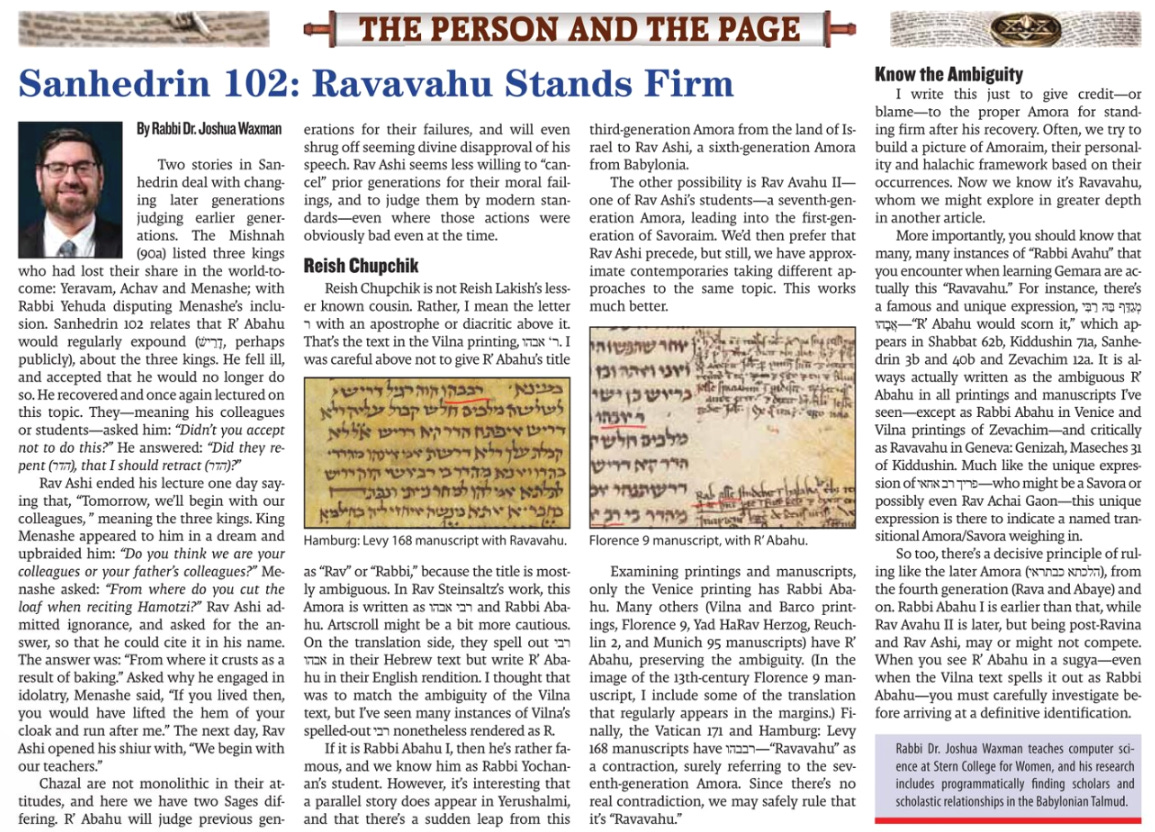Ravavahu Stands Firm (article summary)
My article last week was about Ravavahu. You can read it online in the image below, or else at the following links: paid Substack, Jewish Link HTML, flipbooks. An outline below the image.
Essentially, we’ve had this fairly active Amora, R’ Abahu, weighing in throughout Sanhedrin. For instance, the person who discusses Hashem Shaving Sennacherib was R’ Abahu.
One recent one was on Sanhedrin 102. R’ Abahu judged the three kings, listed in the Mishnah as not having a share in the world to come, fairly harshly in public lectures. He got sick, committed to not do so, but recovered and persisted. “Did they repent that I should repent?” This is in contrast to Rav Ashi, who started out in fairly positive territory, of colleagues, and after contending with King Menashe, promoted them to respective teachers.
Is he really the third generation Amora of the Land of Israel, a student of Rabbi Yochanan? Because there is another Amora, much later, named Rav Abahu / Ravavahu as one word…
It turns out that manuscript evidence is all ambiguous, writing R’ Abahu with an apostrophe / chupchik rather than Rabbi Abahu or Rav Avahu. But, there are two manuscripts who make the Ravavahu explicit.
This Ravavahu is quite late, a student of Rav Ashi, so already transitioning into the Savoraic period.
We don’t have space to fully explore Ravavahu. However, it turns out that megadef bah R’ Abahu is actually him, and so he gets his own catch-phrase just like Rav Achai, either an early Savora or Gaon.
Finally, know the ambiguity! There are so many instances of R’ Abahu, and everyone always assumes it is Rabbi Abahu I. And Vilna Shas isn’t reliable, because they will either have R’ Abahu or even spell out Rabbi Abahu. And similarly, Artscroll will consistently write R’ Abahu, as they do for any instance of the title “Rabbi”, so it is no help. Look to the interactions with other Amoraim, and even without interactions, in what company the Amora is placed.




